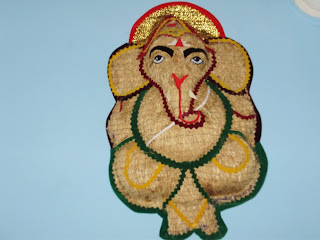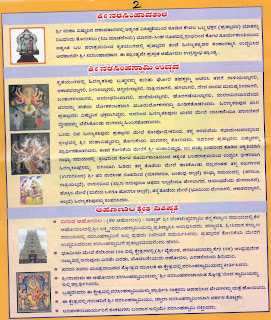Speciality Food at Indian Railway Stations
Some
stations on Indian Railways are famous for the regional specialty
food items available there. Below follows a list of some of them.
Bangalore - Vada sambar, fresh fruit juices
Pune - Tea, Misal, and Patties in the canteen
Karjat - Batata vada / vada pav (Potato snack)
Lonavala - Chocolate Fudge / Cashew nut Chikki (cashew nut brittle candy)
Haveri - Savanur Khara
Neral - Seasonal Jambhool fruit
Khandala - Seasonal Jamoon fruit (plums)
Solapur - Kunda (sweet barfi)
Kolhapur - Sugarcane juice
Miraj - Saar and Rice
Hubli - Curd Rice (yogurt Rice) with onions, chilly peppers & pickles)
Mysore - Dosa & Mysore pak sweet
Tiruchirapalli - Bondas in several variations
Hyderabad - Chicken biryani
Calicut (Kozhikode) - Dal vada
Quilon - Rasam
Mangalore - Egg Biryani
Ernakulam - Fried yellow bananas
Nagpur - Bhujia, and oranges
Guntakal - Mango jelly
Chennai Central - Samosas, idli, dosa
Rameshwaram - Idiuppam (Rice Noodles)
Agra - Petha (candied pumpkin)
New Delhi - Aloo chat (tangy potato snack)
Indore - Farsan
Karajgi- karnataka - Hot Idli and Vadas
Ahmedabad - Vadilal ice-cream
Surat - Undhyo (mixed vegetables) ,Vada pavs
Ranchi - Puri bhaji
Howrah - Sandesh
Amritsar - Lassi, Aloo paratha
Jaipur - Dal bati
Gandhidham - dabeli
Varanasi - Seasonal amrud fruit (guava)
Gorakhpur - Rabdi (a sweet made of milk and sugar)
Guwahati - Tea (Assam blend)
Madurai - Uthappam (spicy lentil/Rice pancake)
Ajmer - Mewa (Mix fruit)
Vasco-da-gama - Fish curry/Veg cutlets
Ratnagiri - Mangoes, dried jackfruit
Vijayawada - Fruit juices
Rajahmundry - Bananas
Daund - Peanuts
Tirupati - Ladoos, sevai
Londa - Jackfruit
Allahabad - Motichur ladoos
Ambala - Aloo paratha
Puri - Halwah
Bhubaneshwar - Dal and Rice
Coimbatore - Sambar-Rice, Tamarind-Rice, Lemon-Rice
Dehradun - Salted cucumber
Gwalior, Bhopal - Boiled chickpeas with chile peppers
Surendranagar - Tea with camel's milk
Anand - Gota (fenugreek fritters), and milk from the dairy farm there
Khambalia Junction - Potato/onion/chili fritters
Dwaraka - Milk pedhas
Viramgam - Fafda (ganthiya), Poori + Alu-bhaji
Pendra Road - Samosas
Manikpur - Cream
Thanjavur - Salted cashewnuts
Bharuch - Peanuts
Maddur - Maddur-vade
Chinna Ganjam - Cashewnuts
Gudur - Lemons
Panruti - Jackfruit
Virudunagar - Poli (a thick sweet flat bread)
Sankarankoil - Long Bananas , Chicken biryani
Srivilliputtur - Paal kova (a soft milk-based sweet)
Manapparai – Murukku
Pune - Tea, Misal, and Patties in the canteen
Karjat - Batata vada / vada pav (Potato snack)
Lonavala - Chocolate Fudge / Cashew nut Chikki (cashew nut brittle candy)
Haveri - Savanur Khara
Neral - Seasonal Jambhool fruit
Khandala - Seasonal Jamoon fruit (plums)
Solapur - Kunda (sweet barfi)
Kolhapur - Sugarcane juice
Miraj - Saar and Rice
Hubli - Curd Rice (yogurt Rice) with onions, chilly peppers & pickles)
Mysore - Dosa & Mysore pak sweet
Tiruchirapalli - Bondas in several variations
Hyderabad - Chicken biryani
Calicut (Kozhikode) - Dal vada
Quilon - Rasam
Mangalore - Egg Biryani
Ernakulam - Fried yellow bananas
Nagpur - Bhujia, and oranges
Guntakal - Mango jelly
Chennai Central - Samosas, idli, dosa
Rameshwaram - Idiuppam (Rice Noodles)
Agra - Petha (candied pumpkin)
New Delhi - Aloo chat (tangy potato snack)
Indore - Farsan
Karajgi- karnataka - Hot Idli and Vadas
Ahmedabad - Vadilal ice-cream
Surat - Undhyo (mixed vegetables) ,Vada pavs
Ranchi - Puri bhaji
Howrah - Sandesh
Amritsar - Lassi, Aloo paratha
Jaipur - Dal bati
Gandhidham - dabeli
Varanasi - Seasonal amrud fruit (guava)
Gorakhpur - Rabdi (a sweet made of milk and sugar)
Guwahati - Tea (Assam blend)
Madurai - Uthappam (spicy lentil/Rice pancake)
Ajmer - Mewa (Mix fruit)
Vasco-da-gama - Fish curry/Veg cutlets
Ratnagiri - Mangoes, dried jackfruit
Vijayawada - Fruit juices
Rajahmundry - Bananas
Daund - Peanuts
Tirupati - Ladoos, sevai
Londa - Jackfruit
Allahabad - Motichur ladoos
Ambala - Aloo paratha
Puri - Halwah
Bhubaneshwar - Dal and Rice
Coimbatore - Sambar-Rice, Tamarind-Rice, Lemon-Rice
Dehradun - Salted cucumber
Gwalior, Bhopal - Boiled chickpeas with chile peppers
Surendranagar - Tea with camel's milk
Anand - Gota (fenugreek fritters), and milk from the dairy farm there
Khambalia Junction - Potato/onion/chili fritters
Dwaraka - Milk pedhas
Viramgam - Fafda (ganthiya), Poori + Alu-bhaji
Pendra Road - Samosas
Manikpur - Cream
Thanjavur - Salted cashewnuts
Bharuch - Peanuts
Maddur - Maddur-vade
Chinna Ganjam - Cashewnuts
Gudur - Lemons
Panruti - Jackfruit
Virudunagar - Poli (a thick sweet flat bread)
Sankarankoil - Long Bananas , Chicken biryani
Srivilliputtur - Paal kova (a soft milk-based sweet)
Manapparai – Murukku
Kalluru
( guntakal ) -- Hot Idlis & chutneys
Nalwar
-- Bhel missal
Panjim - Cashwe Nuts-Roasted
Panjim - Cashwe Nuts-Roasted
------- Hari Om ------



















































